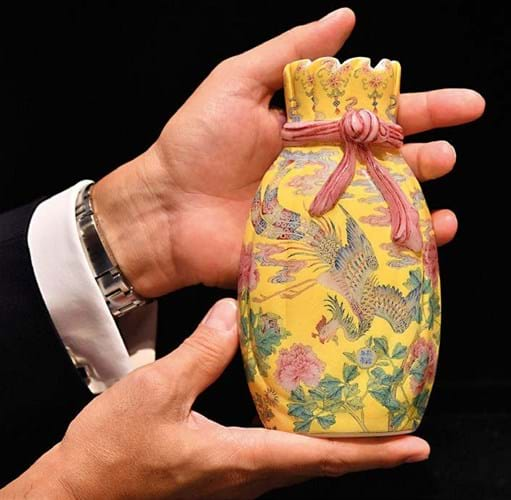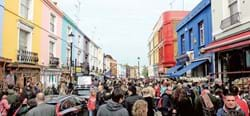
The pouch-shaped vase, evoking a bottle wrapped in a yellow cloth pouch tied with a pink ribbon, was made in the workshops of the Forbidden City in Beijing during the early years of the Qianlong emperor’s reign according to an imperial order of 1738.
The ‘Peking glass’ body – at 7½in (18cm) high it is much larger that most Chinese enamelled glass – was made by imperial artisans in the Glass House with the falangcai decoration of phoenixes soaring amid clouds and peonies applied by imperial painters in the Enamelling Workshops.
Nicolas Chow, chairman of Sotheby’s Asia, called it “the finest, largest and most complex piece of imperial glass to survive”.
It seems just two pieces resulted from the 1738 order – this bottle and a companion piece, of the same complex shape and colour scheme, but different design, now in the Hong Kong Museum of Art.
Both remained in the Imperial House until the collapse of the Qing dynasty when they entered the collection of Prince Gong (1833-98), the sixth son of the Daoguang emperor.
This bottle then passed through the hands of Abel W Bahr in Shanghai (who acquired many works of art from extended imperial family members) and later the Boston collectors Paul and Helen Bernat.
At the Bernat sale (also Sotheby’s Hong Kong) in 1988 it was acquired by Hong Kong tycoon Joseph Lau and sold again at Sotheby’s in 2000 where it was acquired by Robert Tsao, owner of the Le Cong Tang collection, for HK$20m (£2m).
The estimate this time at the auction on October 8 had been ‘in excess of HK$200m’ with the hammer price representing a nine-fold increase on the previous sale.














